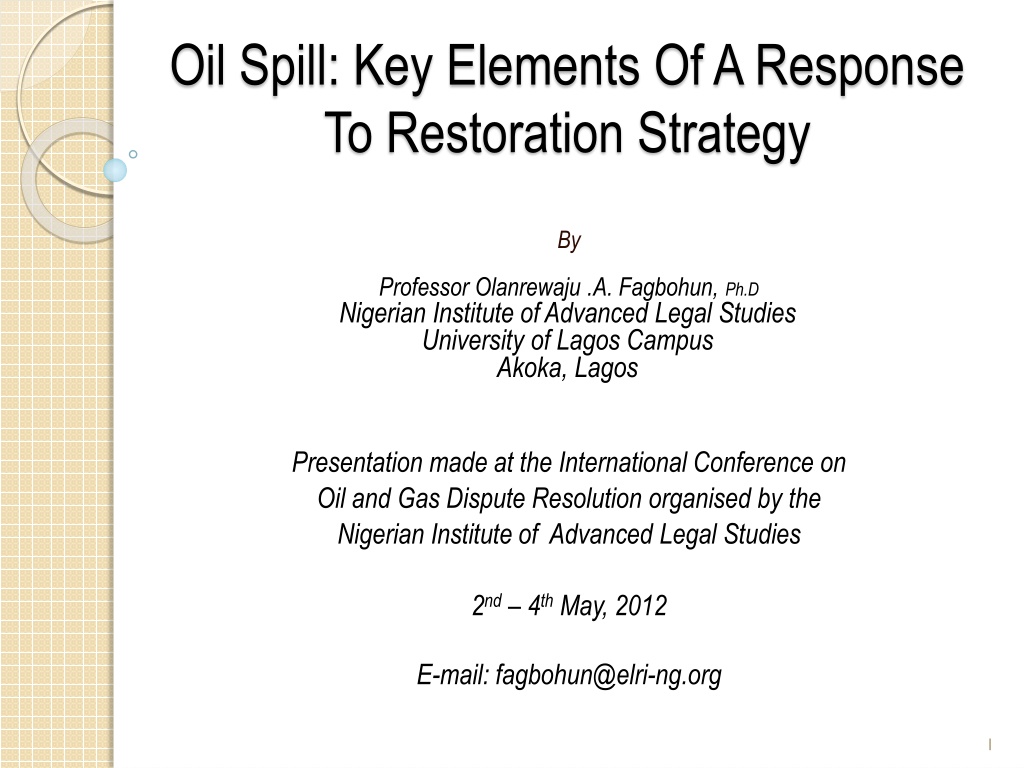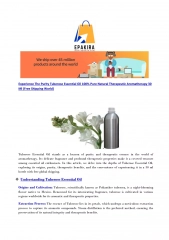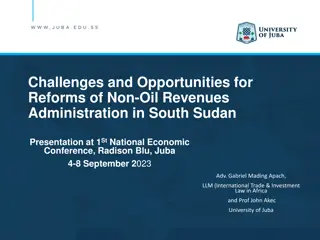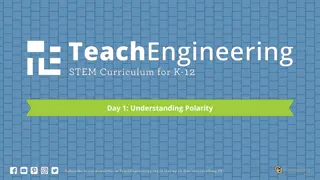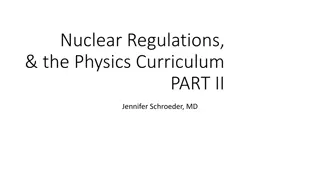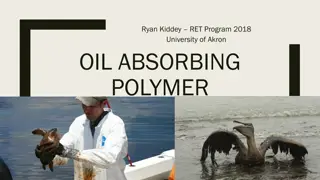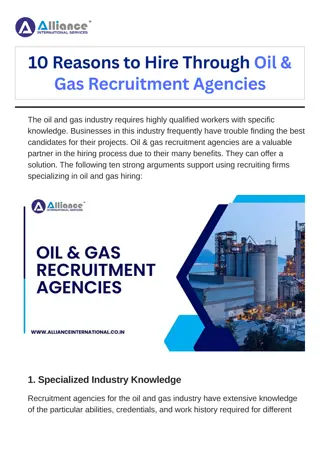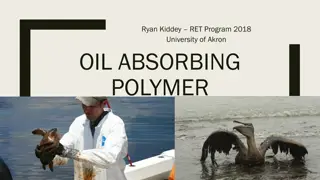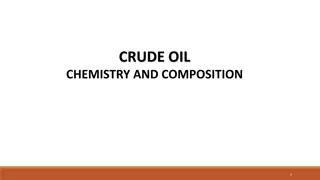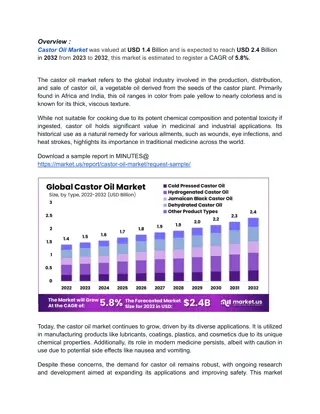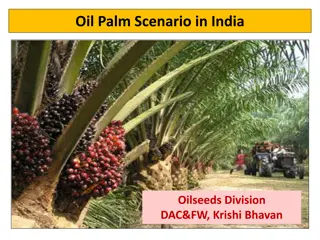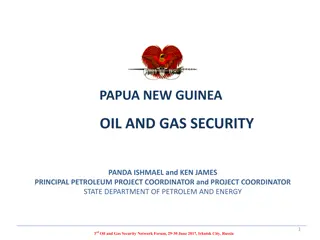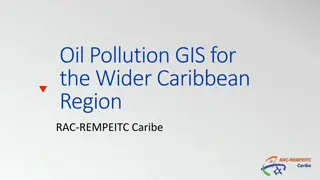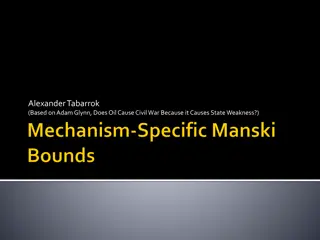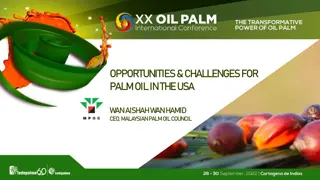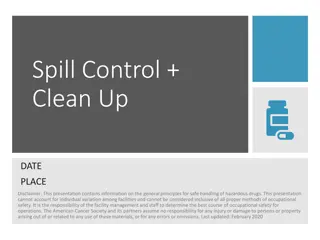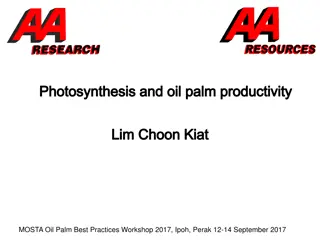The Impact of Oil Spills: Key Responses and Lessons
Presented at an international conference, Professor Olanrewaju Fagbohun highlights key elements of responding to oil spills, emphasizing the significance of these environmental disasters. The vision for a healthy environment, the complexities of oil spill fate, and lessons learned from Nigeria's oil production history are discussed, shedding light on the challenges and implications for restoration strategies.
Download Presentation

Please find below an Image/Link to download the presentation.
The content on the website is provided AS IS for your information and personal use only. It may not be sold, licensed, or shared on other websites without obtaining consent from the author. Download presentation by click this link. If you encounter any issues during the download, it is possible that the publisher has removed the file from their server.
E N D
Presentation Transcript
Oil Spill: Key Elements Of A Response To Restoration Strategy By Professor Olanrewaju .A. Fagbohun, Ph.D Nigerian Institute of Advanced Legal Studies University of Lagos Campus Akoka, Lagos Presentation made at the International Conference on Oil and Gas Dispute Resolution organised by the Nigerian Institute of Advanced Legal Studies 2nd 4thMay, 2012 E-mail: fagbohun@elri-ng.org 1
Vision For A Healthy Environment Sustainable populations of the full suite of biodiversity; Productive habitats such as wetlands, coastal forests, mangroves, oyster reef, coral reefs, offshore banks and deep-water reefs and sponges, that benefit the economy and local cultures; Sustainable healthy populations of commercially and recreationally important species; Ample access to places and resources that provide for public benefit, including clean waters that are swimmable and beaches that sustain vibrant tourism- based economies in balance with nature; Connectivity with coastal rivers and adequate freshwater inflows to maintain productive bays and estuaries; Healthy coastal habitats that are resilient to impacts from development; and Thriving cities and neighbourhoods where people appreciate the full range of goods and services provided by a healthy ecosystem. 2
Significance of Oil Spill Oil is a complex and variable natural substance. The fate in event of spill depends on type and quality of oil spilled, the organisms and habitats exposed, and the nature of exposure. Oil Spill negatively impacts on people s lives and natural resources; Soil degradation including surface and ground water; Coastal zone and the sea; Contamination of plants (botanical resources); Natural landscapes and habitats (wetlands, shrimp nurseries, tidal flats); Cultural landscapes and heritage; Physiological and other effects on human beings; Ramifications of oil spill can be severe and long-term; 3
Lessons for Nigeria Oil production in Nigeria dates back to 1908 with commercial oil discovery at Oloibiri field in 1956; Oil is the core revenue earner and sustainer of the Nigerian economy; Nigeria s Niger Delta is the largest oil reserve in Africa and the tenth largest in the world; Niger Delta is also the largest wetland and maintains third largest drainage in Africa. Its Ecological Zones are critical: Coastal barrier islands; Mangrove swamp forest; Freshwater swamps; and ; Lowland rainforests; Niger Delta contains one of the highest concentration of biodiversity on the planet. 4
Lessons for Nigeria 2011 UNEP assessment of oil pollution in Ogoniland; Oil contamination is widespread and severally impacting many components of the environment; Oil spills continue to occur at alarming regularity despite the fact that the oil industry is no longer active in Ogoniland; At Ejema Ebubu in Eleme Local Government there is presence of heavy contamination 40 years after an oil spill had occurred and despite repeated clean-up attempts; Pollution of soil by petroleum hydrocarbons is extensive in land areas, sediments and swampland; Oil pollution in many intertidal creeks has left mangrove denuded of leaves and stems, leavings roots in a bitumen-like substance; 5
Lessons for Nigeria Surface water throughout the creeks contains hydrocarbons; The fisheries sector is suffering due to the destruction of fish habitat in the mangroves and highly persistent contamination of many of the creeks, making them unsuitable for fishing; The wetlands are highly degraded and facing disintegration; Communities are exposed to petroleum hydrocarbons in outdoor air and drinking water at elevated concentrations; Community members at Nisisioken Ogale are drinking water from wells that are contaminated with benzene, a known carcinogen at levels over 900 times above WHO guideline; Same story in Abesan Community and Diamond Estate in Lagos, Nigeria. 6
Causes of Oil Spill Tank failure at the terminals; Rupture of major delivery lines; Tanker accident with the Nigerian waters; Oil well blowout; Human error; Sabotage. 7
Essence of A Response and Restoration Strategy Overacting goal of an oil spill strategy is restoration of impacted ecosystem to a healthy and productive status, which maintains a full complement of biodiversity and sustains appropriate human uses; Development of strategy must be aligned with the reality that ecosystem knows no political boundaries (interconnected system); Strategy should be ecosystem-wide in scope (comprehensive); Strategy must be based upon a clear synthesis of a functioning and productive ecosystem; Strategy should provide a framework to address injured natural resources and lost ecological services; Funds for restoration should not be divided up among small isolated projects that will not, even when aggregated, address the scale of the problem; Monitoring and assessment should also be simultaneous. 8
Understanding the Related Concepts Restoration, seeks whole ecosystem improvement in the way it attempts to establish a condition that is self-regenerating, self- adapting and self-maintaining; Rehabilitation, any attempt to restore the function of an ecological system, but, which does not go to complete restoration; Reclamation, this in the technical sense refer to efforts aimed at improving landscapes or sites that have been heavily affected or degraded by mining or other large scale construction; Mitigation, actions taken to avoid, reduce or compensate for the effects of environmental damage (evaluation of alternatives); Recovery, involves letting the system alone; 9
Understanding the Related Concepts Remediation, environmental media affected by pollution; it is focused on improving single Replacement or Re-introduction, involves the process of removing one ecosystem and replacing it with another, particularly in the case of rare and distinctive species; Re-creation, involves attempt to wholly reconstruct an ecosystem so much destroyed that there is nothing left to restore; Enhancement, is the increase in one or more values of all or a portion of an existing site by man s activities. 10
Key Expertise of Oil Spill Response and Restoration Strategy Disaster Recovery and Contingency Services; Natural Resource Damage Assessments; Ecosystem Restoration; and Environmental Engineering. 11
Characteristics of Response Strategy Establishment of spill response plans such as Area Contingency Plan; Geographic Response Plan; Facility and Vessel Response Plans. Response goals in order of priority are: Ensure safety of human life; Stabilize the situation to preclude it from worsening (e.g. source control, on-water recovery); Minimize adverse environmental and socioeconomic impacts. Response objectives: Incident specific; Geographically specific; Clearly articulated, measureable and achievable. 12
Developing A Strategy Initial spill conditions will play a role in developing an effective strategy; Initial information must be gathered to determine: Type and amount of oil spilled; Spill location; Behavior of spilled oil; Spill trajectories and persistence; Locations and resources that may be impacted and types of impacts; Current and forecast weather; Personnel safety assessments; Fire or explosion risk; Response option feasibility; and Windows of opportunity. Prepare incident action plan for carrying out identified strategies; Implement field response operations plans for each strategy; As information is gathered, strategies can be revised: 13
Windows of Opportunity For Response There are three windows of opportunity (time frame during which response options are viable) Very early, when oil is fresh and concentrated near sources (focus is on source control, containment near the source and removal: 1 2 days); Early, when oil has spread (focus is to minimize the spread of oil, prevent if from contacting resources at risks, and protect resources and habitats most vulnerable: days to weeks); Later, when oil has stranded (focus is to minimize environmental effects and enhance natural recovery: days to months). 14
The Tiered Response System The categorization. internationally accepted definitions of oil spill Tier 1, Operational type spills, less than or equal to 7 tonnes (50bbls) managed by an individual company; Tier 2, A larger spill greater than 7 tonnes but less than 700 tonnes (5000bbls) require cooperation of companies, industry and possible government response agencies; Tier 3, The large spill, greater than 700 tonnes substantial further resources will be required and support from a national, international co-operative stock pile like Oil Spill and Response Limited (OSRL); 15
Response Options Natural Recovery Barriers/ Berms Physical Herding Booming Skimming Manual Removing /cleaning Oil Mechanical Oil Removal Debris Removal Sorbents Vacuum Sediment Reworking/Tilling Vegetation Cutting/Removal Flooding Low & High Pressure, Ambient Water Flushing Low & High Pressure, Hot Water Flushing Steam Cleaning Emulsion treating Agents Sand Blasting Dispersants Surface Washing Agents Surface Collecting Agents Elasticity Modifiers Solidifiers Nutrient Enrichment (Biostimulation) Natural Microbe Seeding (Bioaugmentation) In-situ Burning 16
Framework For Management of Oil Spill in Nigeria Institutional Framework: Department of Petroleum Resources; National Oil Spill Detection and Response Agency; National Emergency Management Authority. Legal Framework: Environmental Guidelines and Standards for the Petroleum Industry in Nigeria (EGASPIN); National Oil Spill Contingency Plan. (this is in compliance with International Convention on Oil Pollution Preparedness, Response Co-operation - OPRC 90, of which Nigeria is a signatory. 17
Data Development Process EGASPIN mandated development of: Environmental Evaluation (post-impact) Report (EER); (i) (ii) Environmental Impact Assessment Report (EIA); (iii) Abandonment Plan (to include how area impacted will be reclaimed/stabilized after operations); (iv) Baseline Description of the Existing Environment and Resources Used (land, water, flora & fauna, socio-economics, air quality, water use, waste management noise assessment); (v) Risk Reduction Plan (Hazard and Risk Assessment); (vi) Spill Prevention and Counter Measures Plan (Contingency Plans); (vii) Environmental Management Plan (EMP); (viii) Post Environmental Impact Assessment (EIA) Monitoring. 18
EGASPINs Contingency Planning for Prevention, Control and Combating of Oil Spill Oil Spill contingency Plan is an organised and predetermined course of actions to be pursued in the event of a spill; Content of the Contingency Plan Policy on environmental conservation, hazardous substances, chemicals, oil pollution prevention and management; Purpose/objective Environmental protection Availability of manpower, equipment, funds; Good record-keeping is maintained and accurate information concerning spill is disseminated to public and government 19
EGASPINs Contingency Planning for Prevention, Control and Combating of Oil Spill Description of Facilities and Area of Operations; Organization and Responsibility (organization chart of response team showing chain of command in the event of spill); Plan Equipment Content; Containment Procedures and Clean-Up of Spills; Details of Contemporary Communication Network System Linking all Facilities; Disposal Plan for Oil and Debris; Press Release Procedure. 20
Remediation and Rehabilitation (EGASPIN) Polluter Pays Principle (responsibility of spiller to restore to as much as possible the original state of impacted environment); Restorative process to adequately evaluate the biological sensitivities of impacted environment; (post spill impact assessment study); Operater/owner responsible for a spill to monitor impacted environment along side the restorative activities; Use of Oil Spill Chemicals to be authorised by DPR (effectiveness, toxicity and biodegradability); 21
Remediation and Rehabilitation (EGASPIN) Application for Authorization to use chemicals to show the following: Spill Data; Characteristics of Spill Oil; Weather and water condition forecast; Oil trajectory information; Information about available dispersant and dispersing equipment; Shoreline containment and clean-up options; Habitats and resources at risk. 22
Remediation and Rehabilitation Regular training drills and plan revision on annual basis; Control of oil spillages that impact underground matters: Licencee/Operator to inform DPR within 24hrs; Licencee/Operator to activate Initial Remedial Action (IRA) Plan to prevent contaminant migration; Licencee/Operator to assess on site specific basis the contamination by indentifying the source, plume location migration and possible receptors within one (1) month of occurrence; Licencee/Operator shall institute recovery, treatment, monitoring and rehabilitation programmes. 23
Mystery Spills (Spills of Unknown Origin) Operator is responsible for containment and recovery of any spill in its operational area; Where Operator has incurred costs in cleaning up a spill proven not to have been caused by it, operator is entitled to reasonable compensation through funds establishment by Government. 24
Plan Checklist See attached. 25
Conclusion To achieve effectiveness in oil spill response and restoration strategy require cooperation and coordination across many boundaries, both geographic and organizational. A holistic approach extends beyond traditional lines of authority, jurisdiction and responsibility. Federal and State agencies and other stakeholders, all have to work together towards the common vision with perhaps unprecedented sharing of data, resources and responsibilities. Thank you 26
